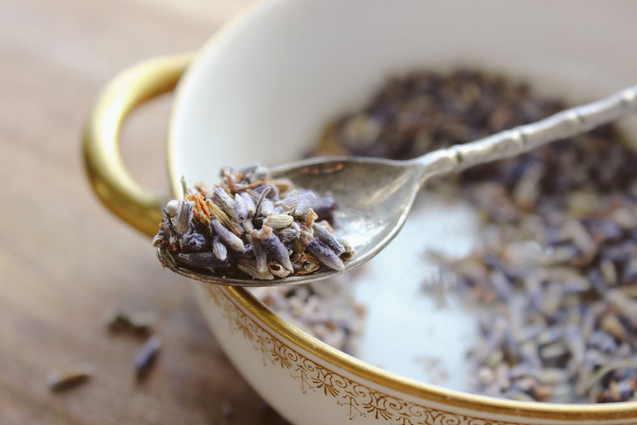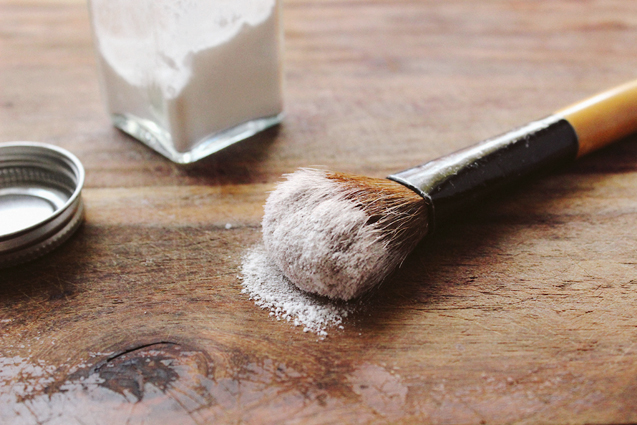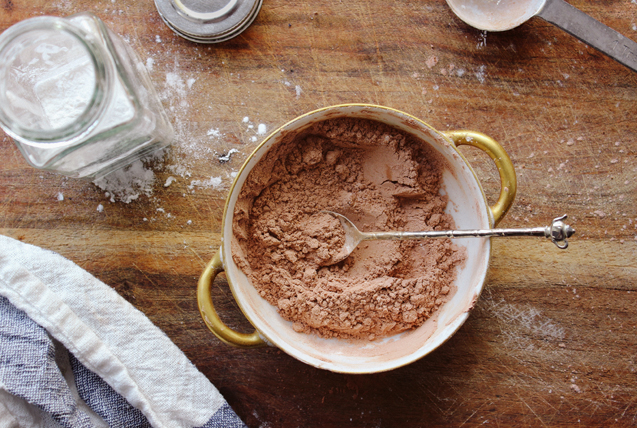A while back, Darling Magazine asked me to share my dry shampoo recipe with their readers. And this summer, every time I brush some into my hair I tell myself “you gotta share this with the YU community now—this stuff is a lifesaver.”
I’ve made two variations you can make for color—dark and light—and infinite variations as far as scent goes.
Hair dressers have always told me “you have fine hair, but a lot of it” and this fact has always had me chasing extra volume. So, the second I tried dry shampoo I was swooning. Not only did it remove any oil from my roots, but my hair’s texture was the stuff of dreams. Dry shampoo is a lifesaver for busy men and women, active folks, and people who prefer the way their hair looks a day (or three) after a shampoo.
It’s also great if you’re camping or road-tripping at all this summer—I used it plenty on my recent trip to Australia and New Zealand.

If you aren’t familiar with dry shampoo, picture yourself running late to meet your pals for dinner post-workout and sans shower. With dry shampoo you not only dry out the oil and add thickening texture to your hair in minutes, but you save some water, too.
Our skin is our largest organ and what it comes in contact with (pollution, chemical cleaners, beauty products, fragrance) eventually makes its way into our bloodstream and can manifest as acne, aches and pains, mood swings, thyroid issues, developmental and reproductive harm, autoimmune disease and even in extreme cases, cancer. Most beauty and personal care products on the market, including dry shampoos (which are usually in aerosol cans), contain known carcinogens, endocrine disruptors and other toxins, so skip the chemical-laden dry shampoos and make your own out of a few ingredients so safe you can eat them. And they smell so good that you’ll want to.
Making your own beauty products is easier than you may think. All you need to make your own dry shampoo is a container (an empty salt shaker, a recycled seasoning jar with a shaker top, a store-bought shaker, or a glass jar with a lid) and maybe a large makeup brush to apply (which I prefer over a shaker for more control). Feel free to double or triple amounts to fill the container you’ll be storing it in.

Get the recipes here for dark and light hair.
For extra drying and texture power (even though arrowroot is already super absorbent), you can add ½–1 tsp of white Kaolin clay to each formula. You can also use any essential oils you like to scent your shampoo.
Try these scent combinations:
- Rosemary + Vanilla
- Vetiver + Rose
- Vanilla + Mint
- Orange, Lemon + Vanilla
- Rosemary, Cedar + Vetiver (a very handsome combination that works well for men)
To apply:
There are a few ways to apply dry shampoo. Try each to see what works best for you.
- Using a shaker, either put some shampoo into the palm of your hands, rub together and apply to oily parts of your hair close to the scalp, or tap shampoo directly into the parts that need some love. Pat down and use fingers to tousle and if necessary, use a brush or comb on hair until all the powder is absorbed.
- I like to use a makeup brush for application because it gives me great control. Just dip brush into powder, tap the extra off and dab the oily parts of your hair close to the scalp. Tousle, brush, and pat until hair is looking clean and oil-free.
Concerned about other chemicals that may be lurking in your beauty routine? Visit the Environmental Working Group’s Skin Care Database to see how your beauty products hold up when it comes to safety.
Have you tried dry shampoo? Tell me what you love about it with a comment below.
Visit us at our new home: Good Food Cooking School


